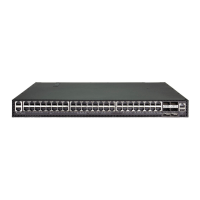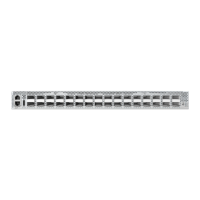Chapter 25
| DHCP Commands
DHCP for IPv6
– 637 –
messages will determine the information this switch should attempt to acquire
from the DHCPv6 server as described below.
■
Both M and O flags are set to 1:
DHCPv6 is used for both address and other configuration settings.
This combination is known as DHCPv6 stateful, in which a DHCPv6 server
assigns stateful addresses to IPv6 hosts.
■
The M flag is set to 0, and the O flag is set to 1:
DHCPv6 is used only for other configuration settings.
Neighboring routers are configured to advertise non-link-local address
prefixes from which IPv6 hosts derive stateless addresses.
This combination is known as DHCPv6 stateless, in which a DHCPv6 server
does not assign stateful addresses to IPv6 hosts, but does assign stateless
configuration settings.
◆ DHCPv6 clients build a list of servers by sending a solicit message and
collecting advertised message replies. These servers are then ranked based on
their advertised preference value. If the client needs to acquire prefixes from
servers, only servers that have advertised prefixes are considered.
◆ If the rapid commit option has been enabled on the switch using the ipv6 dhcp
client rapid-commit vlan command, and on the DHCPv6 server, message
exchange can be reduced from the normal four step process to a two-step
exchange of only solicit and reply messages.
Example
The following command submits a client request on VLAN 1.
Console#ipv6 dhcp restart client vlan 1
Console#
Related Commands
ipv6 address (657)
show ipv6 dhcp duid This command shows the DHCP Unique Identifier for this switch.
Command Mode
Privileged Exec
Command Usage
◆ DHCPv6 clients and servers are identified by a DHCP Unique Identifier (DUID)
included in the client identifier and server identifier options. Static or dynamic
address prefixes may be assigned by a DHCPv6 server based on the client’s
DUID.

